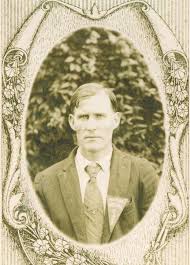The Extraordinary Story of Floyd Collins

Introduction
The tale of Floyd Collins stands as one of America’s most compelling stories of adventure, tragedy, and the human spirit. In the early 1920s, Collins, a Kentucky cave explorer, became trapped underground in Sand Cave, leading to a nationwide media frenzy and discussions about rescue ethics and the dangers of caving. His story is significant not just for its historical context but also for its lasting impact on rescue operations and public safety in hazardous occupations.
The Incident
On January 30, 1925, while exploring in Sand Cave, Floyd Collins encountered a rockfall that trapped him 55 feet below the surface. The harsh realities of the situation soon became apparent: there was minimal food and water, and he had limited ways to communicate with the outside world. As news of his predicament spread, it began to attract national attention, transforming into a grand spectacle that captivated the public.
Rescue Attempts and Media Frenzy
Rescue efforts began swiftly, with local volunteers initially attempting to reach Collins. However, despite overwhelming enthusiasm, the operation faced various challenges, including unstable cave conditions. As events unfolded, the media descended upon the site, reporting on Collins’s situation in real-time and prompting a nationwide outpouring of support, with many Americans following the story via radio broadcasts and newspapers.
As the days turned into weeks, the rescue efforts continued, becoming increasingly complex. Advanced rescue techniques were discussed as both local officials and cave experts joined in the fray. Unfortunately, despite multiple attempts, rescuers faced insurmountable obstacles, leading to a tragic conclusion.
The Impact and Legacy
After being trapped for 18 days, Floyd Collins was declared dead on February 16, 1925. His story had a profound impact on cave exploration safety regulations and the media’s role in rescue operations. Collins’s tragedy highlighted the need for new approaches to cave rescue protocols, resulting in improved training for rescuers and better awareness of cave dangers.
Conclusion
The story of Floyd Collins remains a poignant chapter in American history. His ordeal not only invoked feelings of empathy and concern from the public but also changed how rescue operations were viewed and conducted. As we reflect on his legacy, Collins serves as a reminder of the fragility of life and the courageous efforts made to save those in peril. Today, his story continues to be told, inspiring discussions around safety and humanity in the face of tragedy.









